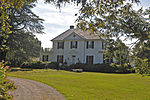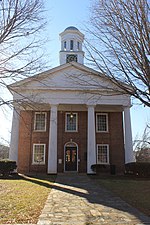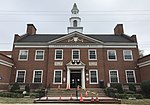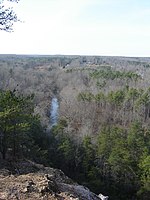Faucett Mill and House

Faucett Mill and House, also known as Coach House and Chatwood, is a historic grist mill, home, and national historic district located near Hillsborough, Orange County, North Carolina. The mill was built before 1792, and is a 2+1⁄2-story, heavy timber frame, weatherboarded building. It is sided alongside a reconstructed mill race and the Eno River. The Faucett House was built about 1808, and is a 2+1⁄2-story, Federal style frame dwelling, with an original one-story rear wing. The house's southwest wing was originally a separate dwelling known as the Naile Johnson House. It was added to the Faucett House about 1938. Also on the property are the contributing mill cottage, barn, and a section of the "Great Road."It was listed on the National Register of Historic Places in 1988.
Excerpt from the Wikipedia article Faucett Mill and House (License: CC BY-SA 3.0, Authors, Images).Faucett Mill and House
Faucette Mill Road,
Geographical coordinates (GPS) Address Nearby Places Show on map
Geographical coordinates (GPS)
| Latitude | Longitude |
|---|---|
| N 36.101111111111 ° | E -79.140277777778 ° |
Address
Faucette Mill Road 1900
27278
North Carolina, United States
Open on Google Maps










